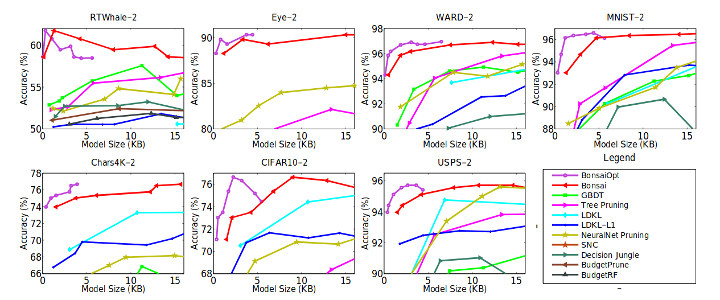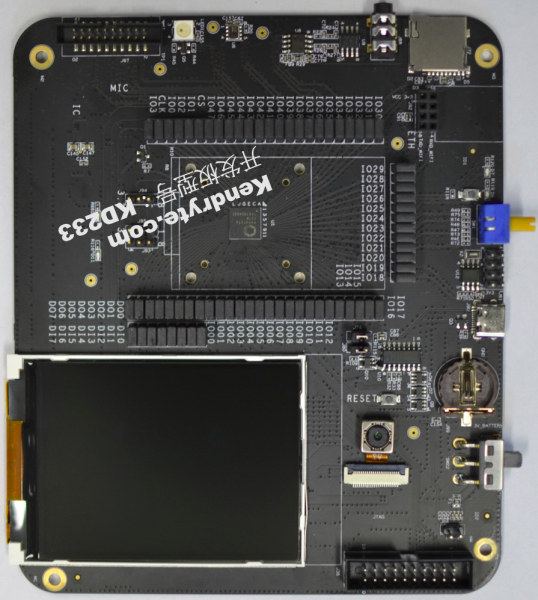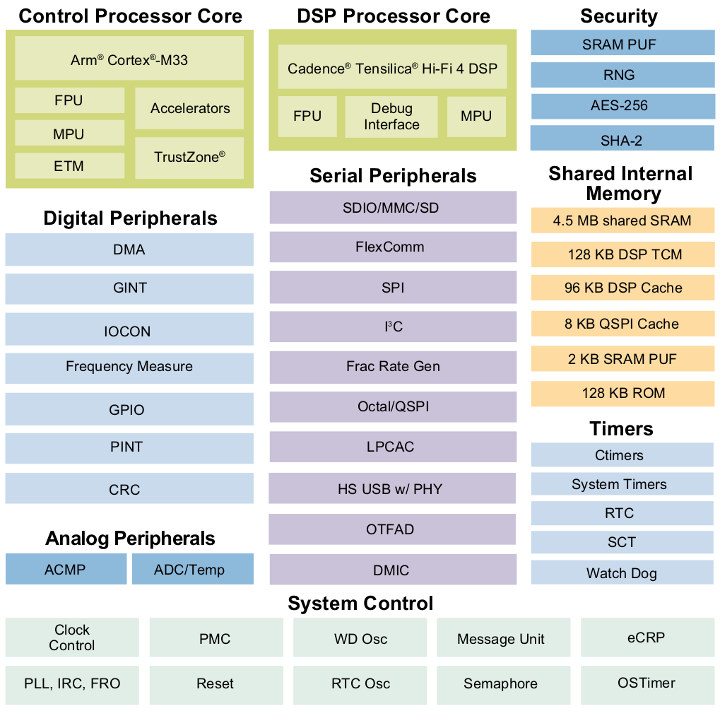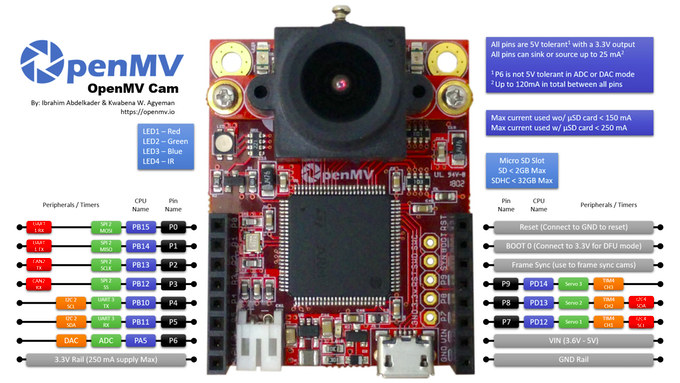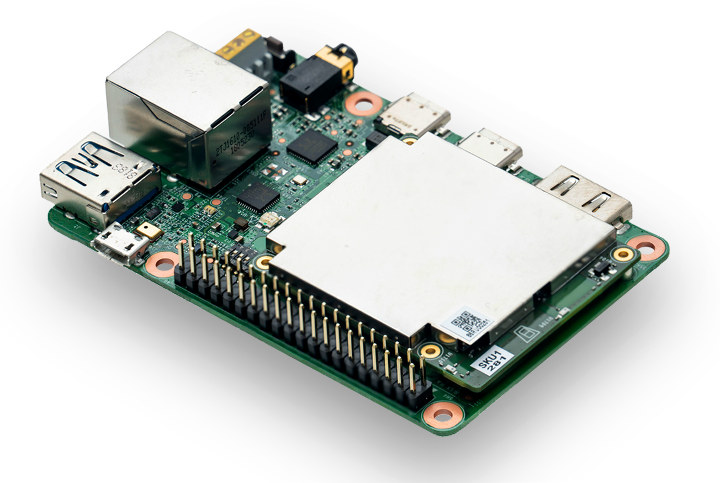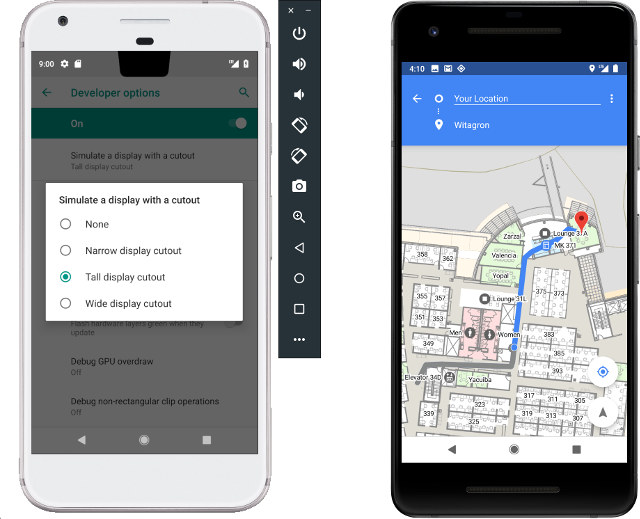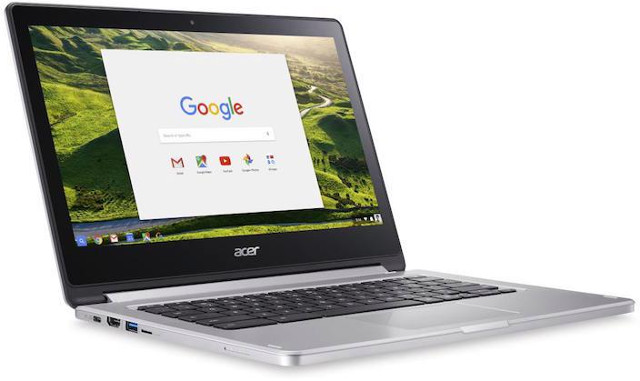Machine learning used to be executed in the cloud, then the inference part moved to the edge, and we’ve even seen micro-controllers able to do image recognition with GAP8 RISC-V micro-controller. But I’ve recently come across a white paper entitled “Resource-efficient Machine Learning in 2 KB RAM for the Internet of Things” that shows how it’s possible to perform such tasks with very little resources. Here’s the abstract: This paper develops a novel tree-based algorithm, called Bonsai, for efficient prediction on IoT devices – such as those based on the Arduino Uno board having an 8 bit ATmega328P microcontroller operating at 16 MHz with no native floating point support, 2 KB RAM and 32 KB read-only flash. Bonsai maintains prediction accuracy while minimizing model size and prediction costs by: (a) developing a tree model which learns a single, shallow, sparse tree with powerful nodes; (b) sparsely projecting all data into […]
$50 Kendryte KD233 Board Features K210 Dual Core RISC-V SoC
RISC-V is talked about a lot, and we’re started to see a few development boards coming to market, or at least being announced with some based on SiFive processors such as HiFive Unleashed or Arduino Cinque, as well as other like GAPUINO GAP8 for low power A.I. applications. The Arduino board is not for sale yet, and HiFive Unleashed and GAPUINO GAP8 are fairly expensive at $999 and $229. Kendryte KD233 board is another RISC-V development board, based on Kendryte K210 dual core 64-bit RISC-V processor designed for machine vision and “machine hearing”. The board goes for $49.99 on AnalogLamb. Kendryte KD233 board specifications: SoC – Kendryte K210 dual core 64-bit RISC-V processor, KPU Convolutional Neural Network (CNN) hardware accelerator, APU audio hardware accelerator, 6MiB of on-chip general-purpose SRAM memory and 2MiB of on-chip AI SRAM memory, AXI ROM to load user program from SPI flash Storage – 128 Mbit […]
NXP Unveils i.MX RT600 Series Arm Cortex-M33 + Audio DSP Crossover Processor
A little over a year ago, NXP introduces their first crossover processor that blurs the line between real-time capabilities of microcontrollers and higher performance of application processors with NXP i.MX RT1050 processor equipped with a Cortex-M7 core clocked at up to 700 MHz. The company has now announced another model with lower power consumption. NXP i.MX RT600 series comes with a Cortex M33 core clocked at up to 300MHz, a Cadence Tensillica HiFi 4 audio DSP, and up to 4.5MB shared SRAM. Main features of NXP i.MX RT685 crossover processor: CPU Core – Arm Cortex-M33 up to 300 MHz DSP – Tensilica Hi-Fi 4 up to 600 MHz Memory Up to 4.5 MB on-chip RAM 128KB DSP TCM, 128 KB DSP Cache Storage 96KB ROM on-chip 2x SDIO with 1x supporting eMMC5.0 w/ HS400 1x Octal/Quad SPI up to 100MB/s Peripherals 2x DMA Engines with 35 channels each 1x USB […]
OpenMV Cam H7 MicroPython Machine Vision Camera Launched on Kickstarter
OpenMV team has launched an upgrade to their popular OpenMV CAM M7 machine vision camera, with OpenMV CAM H7 replacing the STMicro STM32F7 micro-controller by a more powerful STM32H7 MCU clocked at up to 400 MHz. Beside having twice the processing power, the new camera board also features removable camera modules for thermal vision and global shutter support. OpenMV CAM H7 camera board specifications: MCU – STMicro STM32H743VI Arm Cortex M7 microcontroller @ up to 400 MHz with 1MB RAM, 2MB flash. External Storage – micro SD card socket supporting up to 100 Mbps read/write to record videos and store machine vision assets. Camera modules Omnivision OV7725 image sensor (default) capable of taking 640×480 8-bit Grayscale / 16-bit RGB565 images at 60 FPS when the resolution is above 320×240 and 120 FPS when it is below; 2.8mm lens on a standard M12 lens mount Optional Global Shutter camera module to capture […]
Google Unveils Edge TPU Low Power Machine Learning Chip, AIY Edge TPU Development Board and Accelerator
Google introduced artificial intelligence and machine learning concepts to hundreds of thousands of people with their AIY projects kit such as the AIY Voice Kit with voice recognition and the AIY Vision Kit for computer vision applications. The company has now gone further by unveiling Edge TPU, its own purpose-built ASIC chip designed to run TensorFlow Lite ML models at the edge, as well as corresponding AIY Edge TPU development board, and AIY Edge TPU accelerator USB stick to add to any USB compatible hardware. Google Edge TPU (Tensor Processing Unit) & Cloud IoT Edge Software Edge TPU is a tiny chip for machine learning (ML) optimized for performance-per-watt and performance-per-dollar. It can either accelerate ML inferencing on device, or can pair with Google Cloud to create a full cloud-to-edge ML stack. In either case, local processing reduces latency, remove the needs for a persistent network connection, increases privacy, and […]
FOSSASIA Summit 2018 Schedule – March 22-25
FOSDEM is the “Free & Open Source Software Developers’ European Meeting” takes place the first week-end of February every year in Brussels, Belgium. It turns out there’s an event in Asia called FOSSASIA Summit that’s about to take place in Singapore on March 22-25. There are some differences however, as while FOSDEM is entirely free to attend, FOSSASIA requires to pay an entry fee to attend talks, although there are free tickets to access the exhibition hall and career fair. There are also less sessions as in FOSDEM, but still twelve different tracks with: Artificial Intelligence Blockchain Cloud, Container, DevOps Cybersecurity Database Kernel & Platform Open Data, Internet Society, Community Open Design, IoT, Hardware, Imaging Open Event Solutions Open Source in Business Science Tech Web and Mobile Since the event is spread out over four days, it should be easier to attend the specific sessions you are interested in. I’ve […]
Android P Developer Preview Released with Indoor Positioning, Display Notch Support, HDR VP9 Video, and More
Google has just announced the release of the first developer preview for Android P mobile operating system, as the company is looking for feedback from developers who can use the official Android emulator, as well as images for Pixel, Pixel XL, Pixel 2, and Pixel 2XL devices for testing Google will take into account comments from developers before finalizing the APIs and features. That won’t be the only preview however, as the company plans to release other developer previews planned before the stable release at the end of the year, and Google aims to reveal more at Google I/O 2018 next week. Some of the interesting changes and new features found in Android P so far: Indoor positioning with Wi-Fi RTT (Round Trip Time) also known as 802.11mc WiFi protocol Display cutout support for some of the new phones with a notch Improved messaging notifications, for example highlighting who is […]
Imagination Releases PowerVR CLDNN Neural Network SDK and Image for Acer Chromebook R13
Last month, Imagination Technology released their PowerVR CLDNN SDK, an AI-oriented API that leverages OpenCL support in PowerVR GX6250 GPU in order to create network layers for constructing and running a neural network on PowerVR hardware. Eventually the SDK will support PowerVR Series2NX Neural Network Accelerator, but while waiting for the hardware, the company has provided a firmware that runs only on Mediatek MT8173 based Acer Chromebook R13. The SDK includes a demo taking a live camera feed to identify the object(s) the camera is pointing at, using known network models such as AlexNet, GoogLeNet, VGG-16, or SqueezeNet. All models are Caffe models trained against the ImageNet dataset, a benchmark function is included within the demo. Beside simply playing with the demos, you’ll be able to study the source code to check out various helper functions such as file loading, dynamic library initialisation and OpenCL context management, and read documentation such as the PowerVR CLDNN reference […]


